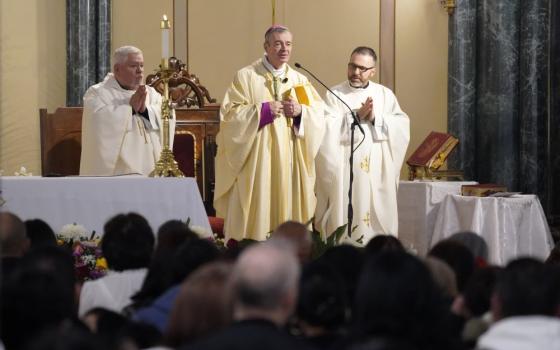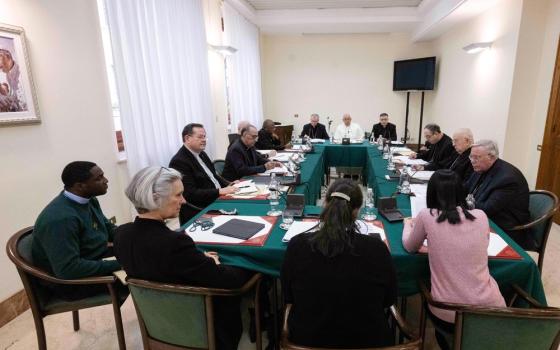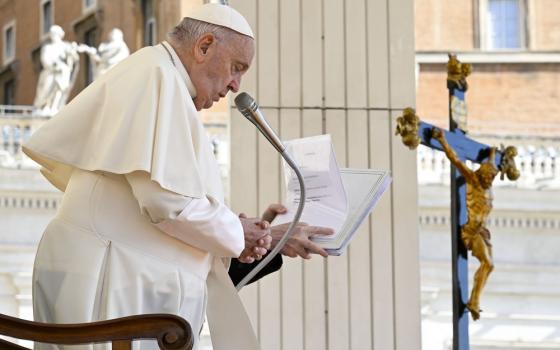
What is a spiritual classic? Theologian David Tracey says it is a book that transforms the reader, who recognizes in it something essential and true. Its longevity follows from its power to inspire lives.
Christians today are fortunate to be heirs to a revival of these classics, many of which have now been translated and republished. This revival, stimulated by the Second Vatican Council, had earlier antecedents, one of which was Mysticism: A Study of the Nature and Development of Man’s Spiritual Consciousness, published in London and New York in 1911.
This 500-page book, based on a thousand sources, both stimulated interest in the mystical tradition and itself became one of these spiritual classics.
 It was widely acclaimed, saw 12 editions, remained continuously in print over the last century and for the first time made the mystics accessible to the general reader. This year marks the centennial of Mysticism’s publication. Its author, a little-known Anglican woman named Evelyn Underhill, reclaimed the mystical tradition and made it the seedbed of her subsequent writing on the spiritual life.
It was widely acclaimed, saw 12 editions, remained continuously in print over the last century and for the first time made the mystics accessible to the general reader. This year marks the centennial of Mysticism’s publication. Its author, a little-known Anglican woman named Evelyn Underhill, reclaimed the mystical tradition and made it the seedbed of her subsequent writing on the spiritual life.
Among her own contemporaries, her influence was substantial. Michael Ramsey, former archbishop of Canterbury, claimed Underhill did more than anyone else to keep the spiritual life alive in Anglicanism in the period between the wars. But her contribution was more than generational. Through her writing she created an environment in which mysticism and the spiritual life could be legitimately explored by “normal” people. In this sense she is a forerunner of contemporary Christian spirituality.
In 1911 no one might have expected Underhill to produce this study of what at the time was an esoteric and suspect topic, at least among Protestants. A poet and novelist who had studied briefly in the Ladies’ Department of King’s College, London, Underhill seemed to be totally unprepared to undertake this investigation. At best she was an amateur, what the Victorians called a “lady scribbler.” But it was her experience of art, architecture and religious ritual in Italy that drew her to explore the faith that produced this visual beauty.
This was a great awakening for a young woman whose family was nominally Anglican, deists at best. She returned from her travels desiring to, as was said at the time, “go over to Rome.” In the end, she postponed this conversion. Underhill was a modernist, and Pope Pius X condemned the modernists as “the devil within the church.” Her integrity forced her to delay entering the Roman church, as did the opposition of her longtime fiancé, who did not want a Catholic wife. The result was that she was in a limbo without religious community. Her response was to throw herself into the study of mysticism, work that brought her into intimate contact with the texts of the medieval mystics.
Mysticism was a study in anthropology and psychology, not of theology. In it, Underhill defined the phenomenon of mysticism, tracked its development through stages and illustrated its manifestations. By examining mystic texts, she uncovered the personality of the authors, those who she claimed had a particular psychological makeup, a natural capability of extraordinary concentration, an intensity of love and will, a capacity for self-discipline, courage and a craving for truth. Their desire was not for knowledge but love, which always transfigured the will and led to surrender to ultimate reality.
Mysticism was remarkable on a number of counts. It reclaimed and preserved the mystics’ contribution as the highest form of human consciousness and defined the phenomenon as the desire for and experience of the love of God. In so doing, Underhill undercut the popular notion that mysticism was centrally characterized by abnormal psychic manifestations such as visions and voices. The book asserted that while the mystic process was exemplified in the lives of the great mystics, it was available to ordinary people because they too had a “capacity for God.” In this sense the mystics were “kin and kith,” different from “normal” people only in degree, not kind. Finally, by quoting amply from mystic texts, the book served as a compendium of mystic literature that previously had been inaccessible to the general reader.
If Mysticism had been Underhill’s only contribution, her reputation would have been ensured, but she went on to be a prolific writer who produced a total of 39 books and some 350 articles and reviews. She was honored in her own time as the first woman to be an outside lecturer in religion at Oxford, as a Fellow of King’s College, London, and as a recipient of an honorary degree from the University of Aberdeen, Scotland
Although initially her writing centered on the mystic tradition, at midlife she changed course after she sought out the guidance of Catholic theologian Friedrich von Hügel (she claimed she owed her whole spiritual life to him), and returned to the Anglican church of her childhood. Gradually, she transitioned to a new vocation, what was then called “the care of souls” carried out through individual counsel and retreats.
In the 1920s, Underhill was a pioneer in the incipient retreat movement within Anglicanism, being the first woman to offer a retreat in Canterbury Cathedral and the first to give a retreat to Anglican clergy. In 1936, she gave a series of retreat-like addresses for the BBC. For almost a decade, she would offer five or six retreats a year that subsequently would be polished and published.
Through these she nurtured an expansive understanding of the spiritual life, which she considered neither a separate part of life nor distinctive from life itself. Rather, the spiritual life was that life “in which all that we do comes from a center where we are anchored in God.”
Underhill’s last major book, Worship, was published in 1935 and served as a bookend to her large literary corpus. In it, she wrote appreciatively of the diverse forms of human responses to the divine. At a time when the ecumenical spirit was almost nonexistent, Worship gave testimony to her intellectual and emotional generosity.
Underhill’s ultimate vocation was made possible through historical circumstance. In 1939, three years before her death and facing opposition from friends and church, she became a pacifist. This was not a political decision, but one she claimed followed from the love of God, namely the command to love one’s fellow creatures.
Underhill initially desired to become a Catholic, but did not. She remained within the Anglican tradition, claiming there was plenty of work for her to do there. She was, however, formed by the mystics, almost all of whom were Catholic, and guided by the wisdom of the Catholic von Hügel. Ironically, Underhill proved to be one of the foremost proponents of the Catholic mystical tradition.
In 1966, Karl Rahner audaciously claimed that “the devout Christian of the future will be a ‘mystic’ ... or will cease to be anything at all.” For Rahner, a genuine experience of God was foundational for Christian life in an increasingly complex world. Decades prior to Rahner’s prophecy, Underhill understood the need to recapture the mystic heritage and make it available to her contemporaries. One hundred years later we continue to be heirs to the wisdom of her spiritual classic.
[Dana Greene is dean emerita of Oxford College of Emory University in Atlanta and author of Evelyn Underhill: Artist of the Infinite Life.]



